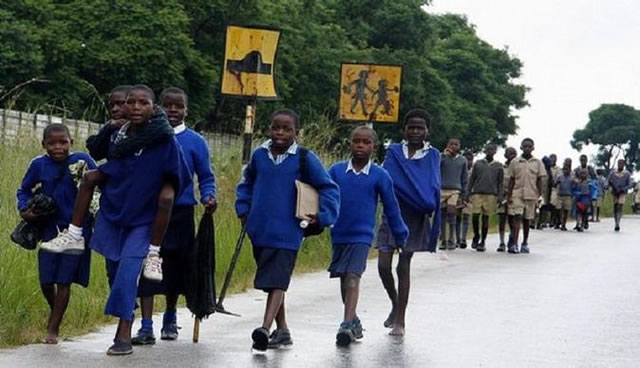BEAM overhaul critical to promoting education

 Conrad Gweru
Conrad Gweru
Although the education system in Zimbabwe is still the envy of the continent, it is under threat following poor service delivery coupled with deteriorating learning environments. Time to tiptoe around critical issues that affect the day-to-day living of ordinary Zimbabweans is long overdue.
Zimbabwe is waiting for solutions.
The country’s education system calls for urgent change.
A realistic transformation in this sector will not be meaningful without changing some of the processes that are contributing to the decay of the sector, in addition to lack of funding.
During presentations to the Parliamentary Portfolio Committee on Public Service, Labour and Social Services, representatives from the Ministry of Public Service, Labour and Social Services indicated that the Basic Education Assistance Module (BEAM) was failing to support all children in need due to funding constraints.
Making presentations to the committee, Mr Chinake, the Director of Child Welfare and Probation Services, indicated that BEAM funds were not adequate to meet the needs of all deserving pupils, hence it needed to be increased by 172 percent.
Currently, donors provide US$15 million for primary school beneficiaries while Government commits US$15 million for secondary school beneficiaries.
To date, Government has managed to disburse claims dating back to the first term of 2013, a situation that is contributing to poor service delivery as schools are unable to purchase basic needs required for teaching purposes.
The scheme pays school fees and levies for primary and secondary level students including examination fees for six Ordinary Level subjects and all three subjects for Advanced Level examination fees.
To date, the scheme has paid for 5 442 352 children, although there has been a consistent decline in the number of beneficiaries from 2010 due to budgetary constraints.
While it is widely appreciated that funding for both primary and secondary school beneficiaries is limited, Portfolio Committee members expressed dissatisfaction in the manner the ministry was managing the fund.
Certainly, there is need to put more resources into BEAM.
This will help in an increased number of children benefiting from the scheme.
But concerns have been raised that the system has too many loopholes allowing undeserving children to benefit at the expense of desperate cases.
Members’ sentiments were based on issues raised in their constituency. These are consistent with observations in a 2012 report titled, “Tracking the Governance and Accountability of the Basic Education Assistance Module (BEAM) in 10 Districts of Zimbabwe” conducted by the Training and Research Support Centre (TARSC) and Zimbabwe Teachers’ Association (ZIMTA).
The selection criteria that have been used ignored BEAM selection guidelines in relation to children’s previous, or non-enrolment due to economic challenges; a record of previous failure to pay school fees; employment status of the head of the household; health status of the bread- winner or the head of the household; orphaned status of the beneficiary, and assets of the household.
Based on the selection criteria, the Ministry of Public Service, Labour and Social Services can be forgiven for relying too much on CSCs given that they live in the community and can easily identify and verify beneficiaries based on the checklist.
However, legislators observed that several children in Zimbabwe were failing to access basic education due to failure by Government through the Ministry of Labour and Social Services to strictly monitor and evaluate the selection process as the ministry relied too much on the CSCs.
There have been several reports of unprofessional conduct and lack of compliance.
This has seen eligible children fail to access the social protection scheme due to their deliberate exclusion by the CSCs who have favoured their relatives and their children.
The report by ZIMTA and TARSC notes that most school authorities have kept the list of BEAM beneficiaries a secret, a situation that is against the BEAM fund implementation guidelines.
Currently, the ministry together with its donor, conduct random compliance visits to 10 percent of all primary and secondary schools in the country.
According to the ministry, these visits are only meant to verify BEAM fund compliance by schools, and not verification of beneficiaries, hence giving too much autonomy to the CSCs on selection of beneficiaries.
The administration of the fund by the schools also needs scrutiny: some schools have remained with unused funds as beneficiaries used other means to pay school fees and levies or drop out of school completely.
Unfortunately, the provision for reimbursement is left to the discretion of the school authorities.
Given that most schools, especially in rural areas, do not have qualified personnel to manage funds and headmasters are the only accounting officers, it leaves a lot of questions as to where the remaining funds go to.
In this regard, the ministry should revise its manual.
And through strengthened partnership with Ministry of Primary and Secondary Education, ensure that all guardians and parents of children benefiting from the programme are paid in advance.
Based on indications that schools were allocated BEAM funds on the strength of their total enrolment and not necessarily on the basis of need, members felt that the ministry should revisit the criteria for budgeting and disbursing funds.
Some schools may have low enrolment because poverty levels in that particular community are so high such that parents and guardians can’t afford to send their children to school.
This implies that most orphans and vulnerable children from child-headed households and those under the care of older or disabled persons who drop out of school may fail to get a second chance to go to back to school.
Progression from primary to secondary school including transfer of beneficiaries from one school to another is not smooth and children tend to be prejudiced when they have to undergo vetting or move to an oversubscribed school.
The report by ZIMTA and TARSC also notes the need for the ministry to consider material support for learning tools through partners in education sector.








Comments